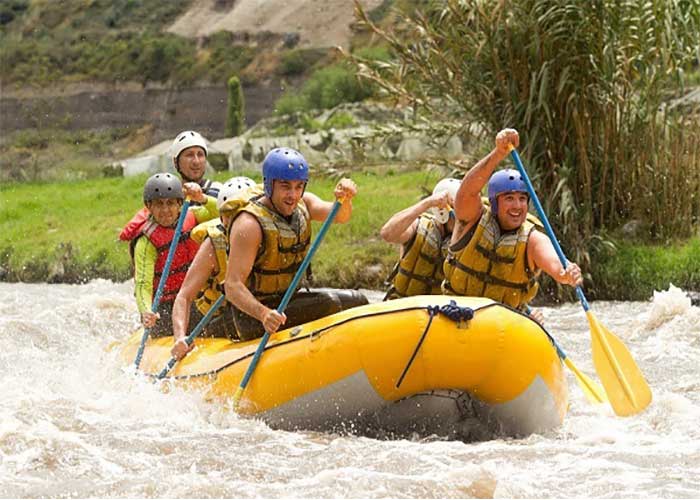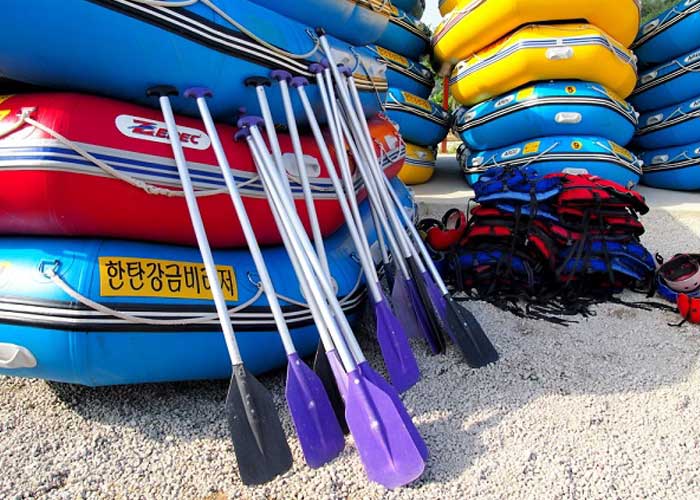ARTIFICIAL RIVER RAFTING


RAFTING EQUIPMENT
- Inflatable Rafting Boat
- Life Jacket
- Helmets
- Carbon Paddles
- Wetsuit
- Drysuit
- Rescue Throw Bags
TYPES OF ARTIFICIAL RIVER RAFTING
There are six levels of difficulties in white water rafting which range from simple to very dangerous.
TYPE 1
In this level, the water has very small rough areas. The rafters may require either none or little maneuvering.
TYPE 2
This water is a little rougher in comparison to Type 1. It may contain rocks and small waves, and requires maneuvering.
TYPE 3
This level contains white water with medium waves. The waves are not dangerous but maneuvering is required.
TYPE 4
In this level, white water contains large waves. In addition to that, rocks may be present in the water. Sharp maneuvering is needed in this case.
TYPE 5
In this level, the water has large waves with high volume. Large rocks and hazards along with large drops may be there. Therefore, it requires precise maneuvering.
TYPE 6
This type of white water can be particularly dangerous as it contains non-passable rapids which may lead to serious injuries or even drowning.
SAFETY
The participants must obey the safety precautions in order to enjoy safe racing as rafting is considered a dangerous sport. Safety regulations raft operators are available with whom the rafters can discuss about the rafting area and rules. The participants are needed to know about the equipment, company’s qualification, and the guide. Although, rafting has become safer due to increase in technology and availability of specialized equipment; one must always take the required safety measures seriously.
